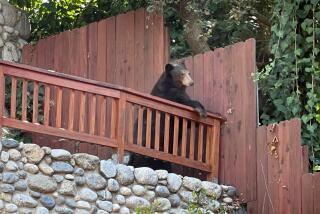BEACHES
Suppose you live in an ocean-view house in Laguna Beach, Redondo Beach or Malibu. Early one morning, you stroll onto the terrace and realize that a 60-foot stretch of sand is occupied by a dead whale . Who ya gonna call?
The Marine Mammal Lab of the Natural History Museum of Los Angeles County, of course.
Each year, dozens of cetacean carcasses--whales, dolphins and porpoises--wash up on California beaches or are found adrift. Those found on Southern Californian shores are brought to the Marine Mammal Lab. The lab, with a research collection second only to that of the Smithsonian Institution, is an ordinary-looking warehouse in Vernon. Some of our planet’s largest creatures are “disassembled” here. Huge skulls are severed from bodies, rib cages as big as kitchens are cleaned, the contents of giant stomachs are emptied and preserved. A visitor half expects to see weather-beaten sea dogs hacking apart mounds of blubber with sabers. But marine biologists John Heyning, Sue Mochel and Tom Lewis are pleasant folks who run an orderly facility.
“Our focus is whales and dolphins,” Heyning says. “We analyze their diet, look at the effects of toxins and gather data about reproduction and life span of different species.” Marine biologists everywhere use these findings in research.
Transport is clearly a problem. In 1988, Ford Motor Co. donated a customized truck with a 20-foot tilting flatbed to ferry leviathans across Los Angeles. It draws more than a few quizzical glances. About two years ago, Heyning and Lewis were returning from the coast with a 20-foot beaked whale lashed onto the truck. They pulled into a fast-food restaurant to pick up lunch. After they went in, many of the restaurant patrons hurried outside for a closer look. “A lot of them thought it was a delivery,” Lewis says.
More to Read
Sign up for Essential California
The most important California stories and recommendations in your inbox every morning.
You may occasionally receive promotional content from the Los Angeles Times.










